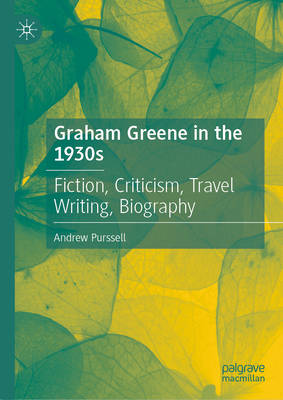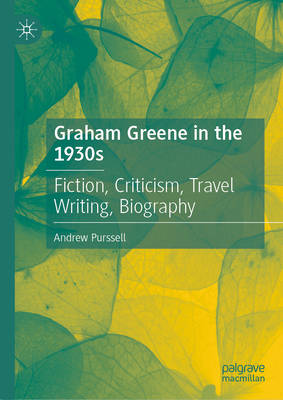
- Afhalen na 1 uur in een winkel met voorraad
- Gratis thuislevering in België vanaf € 30
- Ruim aanbod met 7 miljoen producten
- Afhalen na 1 uur in een winkel met voorraad
- Gratis thuislevering in België vanaf € 30
- Ruim aanbod met 7 miljoen producten
Zoeken
Graham Greene in the 1930s
Fiction, Criticism, Travel Writing, Biography
Andrew Purssell
Hardcover | Engels
€ 167,95
+ 335 punten
Omschrijving
Graham Greene in the 1930s presents a major new reading of Greene's literary works and critical writings from the 1930s, a period of increasing academic interest and importance. Greene's works from this period encompass a wide range of forms, genres and media, capturing the richness and variety of British literary culture between the wars; they also reveal its urgent preoccupations and challenges, such as the era-defining concern with the relationship between politics and art, and a corresponding fascination with modernity and mass culture, as well as the shifting status of literature itself during the first true media age. Graham Greene in the 1930s investigates this major twentieth-century author's less-considered early works in their original literary historical contexts, and in the context of new critical approaches to the decade's literature and culture: from the reconsideration within modernist studies of the kinds of interwar writing - with its characteristic movement between genres and experimentation - typified by early Greene; to the current focus on "the long 1930s" which has seen the decade repositioned at the heart of twentieth-century British literary history. This book establishes the compelling intersections between early Greene and the literature of the 1930s. It puts Greene at the centre of an era of profound and continuous transition, and of a remarkable period in twentieth-century literary history.
Specificaties
Betrokkenen
- Auteur(s):
- Uitgeverij:
Inhoud
- Aantal bladzijden:
- 209
- Taal:
- Engels
Eigenschappen
- Productcode (EAN):
- 9783031954436
- Verschijningsdatum:
- 13/08/2025
- Uitvoering:
- Hardcover
- Formaat:
- Genaaid
- Afmetingen:
- 148 mm x 210 mm
- Gewicht:
- 421 g

Alleen bij Standaard Boekhandel
+ 335 punten op je klantenkaart van Standaard Boekhandel
Beoordelingen
We publiceren alleen reviews die voldoen aan de voorwaarden voor reviews. Bekijk onze voorwaarden voor reviews.








